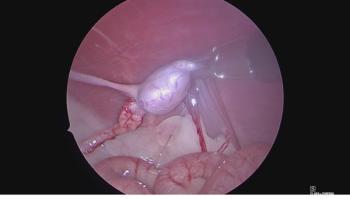
Transcript--Have You Heard? Scrutinizing in-clinic bacterial culture practices
A recent survey looked into how safely and effectively bacterial cultures are performed in practice.
Do you perform bacterial cultures in your practice? If so, are your test protocols and biosafety precautions adequate? A recent study in the Journal of the American Veterinary Medical Association may make you rethink your answer. The study examined the bacterial culture procedures in various veterinary clinics, looking at the quality of the testing and biosafety practices used. The authors obtained their data by inviting members of the Veterinary Information Network online community to fill out a survey. A total of 720 veterinarians responded, and of these, 166 stated that their practices did perform bacterial cultures. These 166 respondents went on to answer to a series of questions about culture practices, and the results were disquieting in many areas, especially in terms of biosafety.
First, the researchers asked what types of cultures were done in-house. About 96% of the practices that performed bacterial cultures did aerobic cultures only. A few did both aerobic and anaerobic cultures, and one practice did aerobic, anaerobic, and microaerophilic cultures. Those practices that performed antimicrobial susceptibility testing mostly used disk diffusion, which is appropriate. However, some of these clinics did not take the additional step of identifying which bacterial species was present. This lack of identification was a concern for the authors for various reasons, one of which is that some organisms are considered to be resistant to some antimicrobials no matter the in vitro results.
The researchers also investigated who was performing the cultures. Veterinarians and technicians performed the cultures most frequently, at 88% and 86% of clinics, respectively. Lay staff, students, and even volunteers were allowed to perform the cultures in a few clinics. Letting potentially untrained people perform this vital test raised a red flag for the authors as well.
Of great concern was where the cultures were performed and the general condition of the environment. The area should be closed off from the rest of the clinic. Protective clothing should be worn. Biohazard signs should be posted. The waste must be decontaminated before it is disposed of. Instead, almost 40% of clinics performed cultures in a discrete area of a larger room where other procedures were performed, and about 25% used the general treatment area. A few practices even allowed cultures to be performed in areas where drugs or food were stored or where food was consumed by staff members. In addition, 70% of clinics had no guidelines for protective clothing. Only two clinics used protective outerwear that was dedicated for use in the laboratory when performing cultures. This ready exposure to potentially harmful pathogens was alarming to the authors.
A close look at what equipment was used to perform the cultures revealed deficiencies in some practices as well. Fortunately, about 80% of practices used a laboratory incubator, most of which had a built-in thermometer to ensure adequate temperature for testing. However, a few clinics used insulated containers with a heat source and only periodically verified that the temperature was appropriate. Four clinics never monitored the temperature. In addition, a reference text was available in only about 68% of practices. Some of these findings are worrisome because appropriate equipment and a way to verify your results are paramount in obtaining accurate results.
Overall, only four of the participants said they thought their bacterial culture practices fulfilled all requirements, and most thought continuing education on the best in-house culture practices would be helpful. The ability to gain this knowledge is important. Clinics can then evaluate whether they should purchase new equipment and create protocols to fulfill all biosafety requirements or whether they should stop performing cultures in-house and send out all samples to laboratories instead.
Source: Weese JS, Prescott JF. Assessment of laboratory and biosafety practices associated with bacterial culture in veterinary clinics. J Am Vet Med Assoc 2009;234(3):352-358.
Newsletter
From exam room tips to practice management insights, get trusted veterinary news delivered straight to your inbox—subscribe to dvm360.




